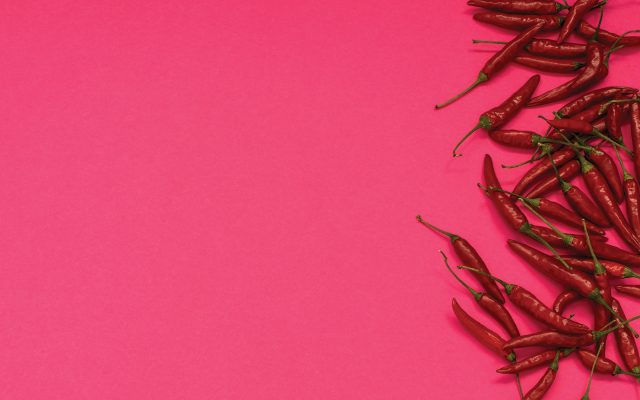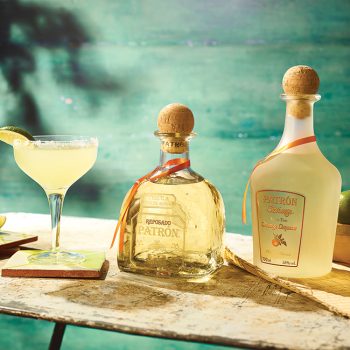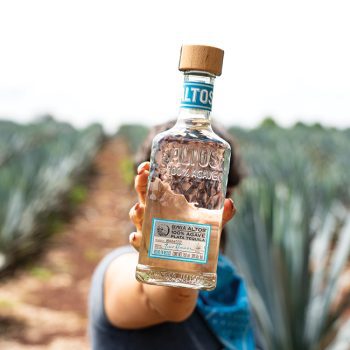This website uses cookies so that we can provide you with the best user experience possible. Cookie information is stored in your browser and performs functions such as recognising you when you return to our website and helping our team to understand which sections of the website you find most interesting and useful.
Agave prices fall as Tequila heats up
By Laura FosterAgave prices have finally dropped, but sales of higher-end Tequila have also slowed. However, with much of the US untapped, brands remain bullish about the opportunities that lie ahead.

*This feature was originally published in the February 2024 issue of The Spirits Business magazine.
The scales have finally tipped in Jalisco. After years of sky-high prices, the value of agave has dropped, and fallen further and faster than anyone could ever have imagined.
“I’m not surprised it’s gone down, but [it’s dropped] so fast and dramatically,” says Sophie Decobecq, founder and maker of Calle 23. “In November 2022 we were at the highest price ever seen – 34 pesos (US$1.97) per kilo of agave. That is a huge amount of money. Agave growers had to have guards in the fields not to have them stolen every night. Every morning they’d go to the field at 6.30am, 7am, and you’d see small trucks coming out filled with agave under a tarpaulin. Obviously it’s a risk to do an illegal harvest at night.
“[Tequila producers] were struggling to get mature agave. The biggest work [at the time] was walking fields and fields, picking out the best plants, and you have to count on your relationships with the growers to ask them to grow some a little longer, and not sell to someone else. And now we have lots of mature agave, and the price is going down.”
Indeed, just a year later, in November 2023, the price was 16.5 pesos per kilo of agave. Towards the end of January 2024, it had dropped to 8 or 9 pesos.
Golden age
To the untrained eye, the past four years have been an unexpected golden age for Tequila – in which sales have gone through the roof, and continuous education about the quality of the category seemingly landed with consumers. With years of incredibly strong sales in the US – where super-premium Tequila sales alone grew by more than 40% between the first half (H1) of 2020 versus H1 2019 and the following year (H1 2021-2022) – it would have seemed that this decade has been halcyon days for all Tequila brands. However, the experience on the ground in Jalisco for a lot of small and medium producers has been a different one, according to Jenny Camarena, co-director for Tequila Tapatio. “It’s been a weird couple of years. For the past five years, with agave extremely expensive, many new and small brands didn’t survive. The volumes that they were selling were too low, and they couldn’t absorb the price of the agave. I believe that most of the companies didn’t make a lot of profits – it was mostly about surviving and keeping our place in the market. At least that was our case. So it was a rough time,” she explains.
Decobecq agrees: “When you are independent, it’s killing you.”
So what has led to such a dramatic drop in agave price? A combination of factors have come into play. First, the explosive growth in Tequila sales in the US slowed down in H1 2023. Second, after a huge wave of planting of agave a few years ago to serve the growing demand for Tequila, a glut of agave is now ripe. This oversupply is obviously a key driver.
Finally – and this is a new situation the industry finds itself in – there are a lot of new, inexperienced people in Mexico who decided to grow agave, having seen how much it was selling for. “I can’t tell you how many people I know who weren’t related to the Tequila industry who came up to me in the past six years and told me ‘I’m investing in agave’,” Sergio Mendoza, founder of Don Fulano Tequila, says.
Decobecq agrees: “Putting savings into planting agave was the fashionable thing to do; you heard about it two or three years ago. People were giving money to agave growers, or renting a field to plant, with no previous experience. They discovered it wasn’t that easy.”
Boom and bust
This inexperience extends to the usual agave growing boom-and-bust cycle, where the new investors see the price drop, worry, and try to sell their agave before the price bottoms out. It is, essentially, a run on a bank, but in this instance the bank is the fields of agave in Jalisco.
“Honestly, seeing the amount of agave when you drive around the state, we don’t know to which point it will drop,” Decobecq continues. “But the good thing for the Tequila industry in general is that we have good agave at a good price because the quality of the Tequila will be good, and we’ll have a better reputation for the market.”
Camarena is also eyeing the opportunity: “Now it’s our time to actually go to that market and say hey, you know what, I can give you a little bit more. I can be bigger. I have the means to actually get more in the market. So, in our terms, now it’s our moment.”
Unsurprisingly, the US is still the key market for most Tequila firms. “The US continues to be a top priority because of its size – roughly 75% of Tequila’s value comes from the US,” says Mia Simpson Culp, Brown-Forman’s vice-president managing director – Tequilas.

Pivotal role
Mauricio Vergara, president and chief operating officer of Patrón Tequila, agrees: “The spirits market in the US plays a pivotal role in setting global trends. With a few exceptions, the US market is the dominant force for most spirits categories. Tequila is a prime example of this dynamic. Its surging popularity in the US can be attributed to demographics, the country’s close proximity to Mexico, and other contributing factors.”
In 2022, 29.9 million cases of Tequila and mezcal were sold in the US – up by 11.5% from 26.8m cases the previous year, with revenue also up by 17.2% to US$3.1 billion in 2022, data from the Distilled Spirits Council of the US (Discus) showed. Last year IWSR predicted Tequila would overtake vodka sales by value in the US by the end of 2023.
While the overall sales figures for the year haven’t yet been released, simply predicting such a thing would happen just goes to show how ubiquitous Tequila is in American drinking culture.
Dig into the detail, however, and you’ll find that some US states are far more developed than others – interviewees agree that California is the leading state in terms of sales and focus, with Florida and Texas also up there. New York, with its world-defining cocktail bar culture, was also mentioned by all the brands I spoke to.
But this leaves huge swathes of the country with large growth potential. “There are 51 US states, and we probably have a presence in 28,” says Mendoza. “We’re a small company; if we were to allocate resources to develop all the rest, that alone could signify a much bigger reflection on sales than focusing in Europe, Australia and other markets. But for us, it’s better to find a balance.”
Success story
The biggest success story in the US has been the prestige end of the agave spirits category, with what Discus terms ‘high-end brands’ skyrocketing by 1,040% in volume from 2003 to 2022; and super-premium brands soaring by 1,522% in volume over the same period.
However, sales figures for the first half of 2023 showed a significant slowdown of growth for premium-and-above Tequilas – sales in this category only rose by 4%, rather than the double-digit growth seen in the same period in the previous three years.
“The Tequila category is still growing in the US, but since the base volume has become so much larger now, the double-digit growth rates we’ve seen in the past are not sustainable,” explains Jose Luis Hermoso, research director at IWSR.
“The category’s growth rates are normalising. But even a smaller percentage growth rate translates into much more actual volume added than in previous years when the base was much smaller.”
While growth at the premium end of Tequila is slowing down, sales volumes at the value end are now growing at roughly the same pace as the top end.
Hermoso credits this with the lower agave price, meaning that the margins are more profitable for value Tequilas, and “the current inflation and disposable income squeeze is producing some downtrading among segments of the population”.
Speaking of economic challenges, Mexico, Tequila’s second-biggest market, is facing similar issues. Consequently, the IWSR forecasts a decline in Tequila consumption there. “Challenging economic conditions – inflation, and less disposable income – are pushing some Mexican consumers out of the Tequila category – which has increased prices markedly at the bottom end – and into the ‘destilados de agave’ category,” explains Hermoso.
Pessimistic forecasts
Most producers who were questioned about this matter were surprised, and felt the forecasts were pessimistic. “It’s true that 2023 has been difficult, economically speaking, everywhere in the world,” says Michael Merolli, CEO of House of Tequila at Pernod Ricard. “So the spirits market is not as dynamic as it used to be in Mexico, but there is still space for growth.”
Challenging market conditions may lead to opportunities, however. A number of companies spoke about the need to innovate in the home market in the face of difficulty.
“It’s a good moment for the whole industry to be more diverse, to get creative. The possibilities are bigger,” Camarena argues.

Pernod Ricard’s Altos brand launched such an innovation at the end of 2023, with its Infusionados variants – two 35% ABV products flavoured with citrus, and coffee, with the infusion process taking place during the second distillation.
“We don’t have such a big footprint in Mexico, but we decided to launch this innovation that has been tailored for the Mexican market,” explains Merolli. “There is still space for growth for Tequila in Mexico.”
Vergara points to cristalino’s rise in Mexico – “where it has become the fastest-growing segment” – as another sign that innovation is well received there.
Merolli agrees: “In Mexico, it’s been really trendy to drink cristalino, especially at nightclubs. People are very proud of drinking a very different Tequila, especially the young generations, to differentiate themselves from their parents.”
Heart and soul
Proximo Spirits is also focusing heavily on its cristalino offerings. “Mexico is the heart and soul of our brands, and speaks to our authenticity, heritage, and craftsmanship,” says Lander Otegui, senior vice-president of marketing at Proximo Spirits, producer of the world’s largest Tequila brand, Jose Cuervo. “We also continue to innovate in the category. Juan Domingo Beckmann, founder of Maestro Dobel, invented the category of cristalino over a decade ago. Proximo now has the largest portfolio of cristalino offerings, thus shaping the future and growth of the wider category.”
With Mexico proving to be an ideal testing ground for product innovation, and an enthusiastic, creative industry keen to spread Tequila’s gospel, the spirit of Mexico is sure to continue growing. As Camarena declares, “It’s our moment to roar again.”
Canada
“Canada is three or four years behind the US – there is definitely a halo effect happening [there]. There is a cultural and geographical proximity, which explains most of the trend, and we see a very similar potential to the one we have been experiencing in the US,” says Michael Merolli, CEO, House of Tequila, Pernod Ricard.
UK
“America is massively important to the Tequila industry, and where it’s been a challenge for the UK is with supply – some brands have suffered more than others. Now we’re in a much more positive supply situation we can expand distribution again, but it’s certainly been a case of managing that demand over the last couple of years, because the goods haven’t been in free flow,” says Chris Seale, managing director, Speciality Brands.
Spain
“Spain boasts a substantial and influential Mexican community that contributes to the evolution of Tequila. It also features a sophisticated on-premise sector, particularly in Madrid and Barcelona. These establishments are at the forefront of global trends, and play a pivotal role in shaping local tastes. Given Tequila’s versatility and the wide array of options available, it has the potential to surpass the popularity of gin,” says Mauricio Vergara, president and chief operating officer, Patrón Tequila.
Australia
“Australia was one of the first markets where we saw Tequila gain relevance and momentum. It has continued to emerge as a pioneering market for Tequila’s growing popularity. The premium spirits sector, including Tequila, in Australia is experiencing challenges due to a variety of factors. However, I remain optimistic that as the market stabilises, Tequila will maintain its trajectory as an expanding category,” says Mauricio Vergara, president and chief operating officer, Patrón Tequila.
The rest of the world
With the US and Mexico combined constituting 85% of Tequila category volumes, it is understandable that most brands focus on these markets.
Beyond this, five markets are predicted to see compound annual growth rates of between 7% and 9% in Tequila volumes between 2022 and 2027: Canada, the UK, Colombia, Australia, and Spain.
While there’s a buzz for Tequila in these countries, volumes are still relatively small. “Outside of Mexico, the US and Canada, Tequila is still in the infancy stages in terms of category understanding and penetration,” says Manuel Orive Guajardo, global brand director Tequila and mezcal at Proximo Spirits. With more product now available to sell thanks to the increase in ripe agave supplies, however, a lot of brands are poised to make considerable gains.
How can Tequila repeat its US success in international markets?
Tim Dunlop – European commercial director, Butterfly Cannon Tequila from Biggar and Leith
“In Mexico and the States, it’s all about authenticity and flavour, but UK consumers are fairly removed from the homeland, history and cultural connection to Tequila, so currently tend to be swayed by unusual packaging or celebrity endorsements.
“To replicate Tequila’s success, as seen in the States, brands need to connect with the trade and consumers, share their brand story and background heritage, and educate on the flavours, nuances, and styles of tequila and how it can be used, mixed and enjoyed.
“In the off-trade, it would be wise for retailers to educate their staff on the various expressions, nuances, ages and flavour profiles of tequilas so they can share this information with customers at the point of purchase to drive trial and repeat purchase.”
Marina Wilson – president, Espanita Tequila Company
“The incredible success of Tequila in the US is tied to an introduction of traditionally crafted 100% Blue agave Tequila brands into the marketplace, and harnessing several important industry trends, including premiumisation, a growing cocktail culture, product innovations, as well as evolving consumer education about Blue agave spirits, their rich heritage and artisanship involved in Tequila production. We believe that the cornerstone of repeating this success in international markets is to enhance people’s knowledge about craft Tequila, encourage their curiosity, and inspire experimentation in mixology. Many international markets have just started to discover and appreciate Tequila; the opportunities for growth are truly endless.”
How do you feel about the many celebrities moving into the sector? What impact do they have on the category?
Nikša Pirović – managing founder, Pacific & Lime
“The engagement of celebrities in the Tequila industry is certainly captivating. It broadens interest, and attracts a more diverse audience. The challenge is to balance the allure of celebrities with a respect for Tequila’s time-honoured practices. While celebrities can introduce new customer segments to Tequila, it’s essential to preserve the spirit’s authenticity and artisanal values. There’s also a significant impact on local communities and smaller producers who might be overshadowed by celebrity-dominated brands. The involvement of celebrities introduces new dynamism and potential for positive impact. Celebrities can use their platforms to educate a broader audience about important issues like environmental preservation and fair labour practices in production.”
Steffin Oghene – vice-president of business development, El Tequileño
“You see opinions all the time about celebrity Tequila, and the majority of them are negative, focused on low-quality, cultural appropriation, all these things. But I think it’s really positive. Whether it’s your personal preference if you like the Tequila, they keep a spotlight on the category, and that’s really positive for everybody. It drives interest, and if they’ve got that network that they can pull in, we can then jump on the back of that with our brand and it’s a win-win situation. I see it as a positive overall.”
Recent data suggests agave-based spirits will overtake vodka in the US on-trade this year. How are you seeing demand for Tequila in bars develop?
Marina Wilson – president, Espanita Tequila Company
“Recent growth of Tequila in on-premise has been largely propelled by the immense popularity of Margaritas, which are consistently named as one of the most popular mixed drinks. However, as more and more US consumers become educated about craft Tequila and its incredible versatility, it is a perfect time to push the boundaries of Tequila’s application in mixology, especially in mixed drinks that involve aged Tequila expressions, which are often overlooked in favor of blanco or reposado. However, añejo Tequila performs exceptionally well in creative riffs on an Old Fashioned, Manhattan, Negroni, or Sidecar, and in numerous spins on sour cocktails. Embracing aged Tequila expressions in mixology presents a huge opportunity for future growth; it has a great potential to fuel strong demand for Tequila in bars year-round.”

